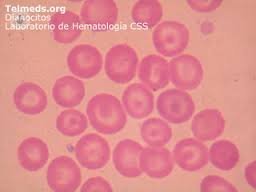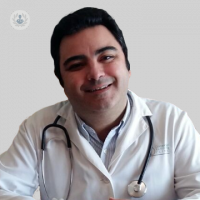Iron deficiency anemia Thalassemia vs
Written by:Thalassemia is a type of anemia that causes a decrease in hemoglobin levels. This causes the red blood cells are fragile and have a short life. Not to be confused with iron deficiency anemia because normally Thalassemia no iron deficiency.

Thalassemia what
Thalassemia is a very common type of congenital and hereditary anemia in the Mediterranean area. Occurs with a decrease in hemoglobin levels due to an alteration in the synthesis or formation thereof, or more specifically the fraction globínica hemoglobin chain. This causes the red blood cells are fragile, with a low survival when circulating in the bloodstream.
Diagnosis of Thalassemia
The diagnosis, as in any process anemic syndromic passes by performing a complete medical history, delving into the background both family and personal patient as well as a comprehensive and systematic clinical examination.
Subsequently, the specialist in hematology indicate the relevant hematological laboratory tests: blood count, biochemistry profile metabolism of iron, folic acid and vitamin B12 and, if necessary, a study of erythrocyte hemoglobins to confirm the diagnosis of thalassemia.
The morphological study of a blood sample from the patient by the hematologist is also very useful. Here we can see red blood cells of different morphology and small size, since not form properly. Among them there is not specific to this pathology morphological figure called target-shaped red blood cell or target cell, characteristic though.
Types of Thalassemia
Depending on the loss-globin chain discuss alpha or beta thalassemia and, within it, based on the quantification of the deficit, is classified as higher-middle-minor or thalassemia trait.
Traditionally, indirectly, certain analytical data can guide us in greater or lesser extent to an anemia of one kind or another. Generally thalassemia result in the blood count by an increase in the number of red blood cells above normal, with levels decreased hemoglobin and a small red cell size, reflected by a laboratory parameter called mean corpuscular volume (MCV ). Mid to late twentieth century - when electrophoresis techniques or quantification of different types of hemoglobina- were perfected a formula correlating the total number of red blood cells with hemoglobin and red blood cell size, which was called was used Index England, term today virtually obsolete out of pure academic field.
Signs and symptoms of thalassemia
Signs and symptoms of thalassemia are virtually indistinguishable from any anemic syndrome. Among other symptoms, it can cause:- Tiredness- Paleness or jaundice increased bilirubin to increase red blood cell destruction- Tachycardia- Headache- Discreet Increased liver and spleen
 How to differentiate Thalassemia an iron deficiency anemia?
How to differentiate Thalassemia an iron deficiency anemia?
The diagnostic approach Thalassemia is a source of confusion not only among the general population but sometimes within the same group health. Most anemias iron deficiency are often confused with Thalassemia, and this is not so. Thalassemia generally have a metabolism study of normal or increased iron, since the accelerated destruction of red blood cells metabolites released into the bloodstream, they entered deposited iron as ferritin in the liver. Sometimes the intrinsic Thalassemia may be accompanied by iron deficiency, if the study made ferric confirms this profile. Suspecting a thalassemia process confirmatory diagnosis is performed by electrophoresis sequencing the different bands of red cell hemoglobin.
Treatment of Thalassemia
The therapeutic approach of thalassemia depend on the degree in question, passing from simply observing the patient to treatment with vitamin supplements, such as folic acid, or even, in extreme cases, hematopoietic stem cell transplantation.


